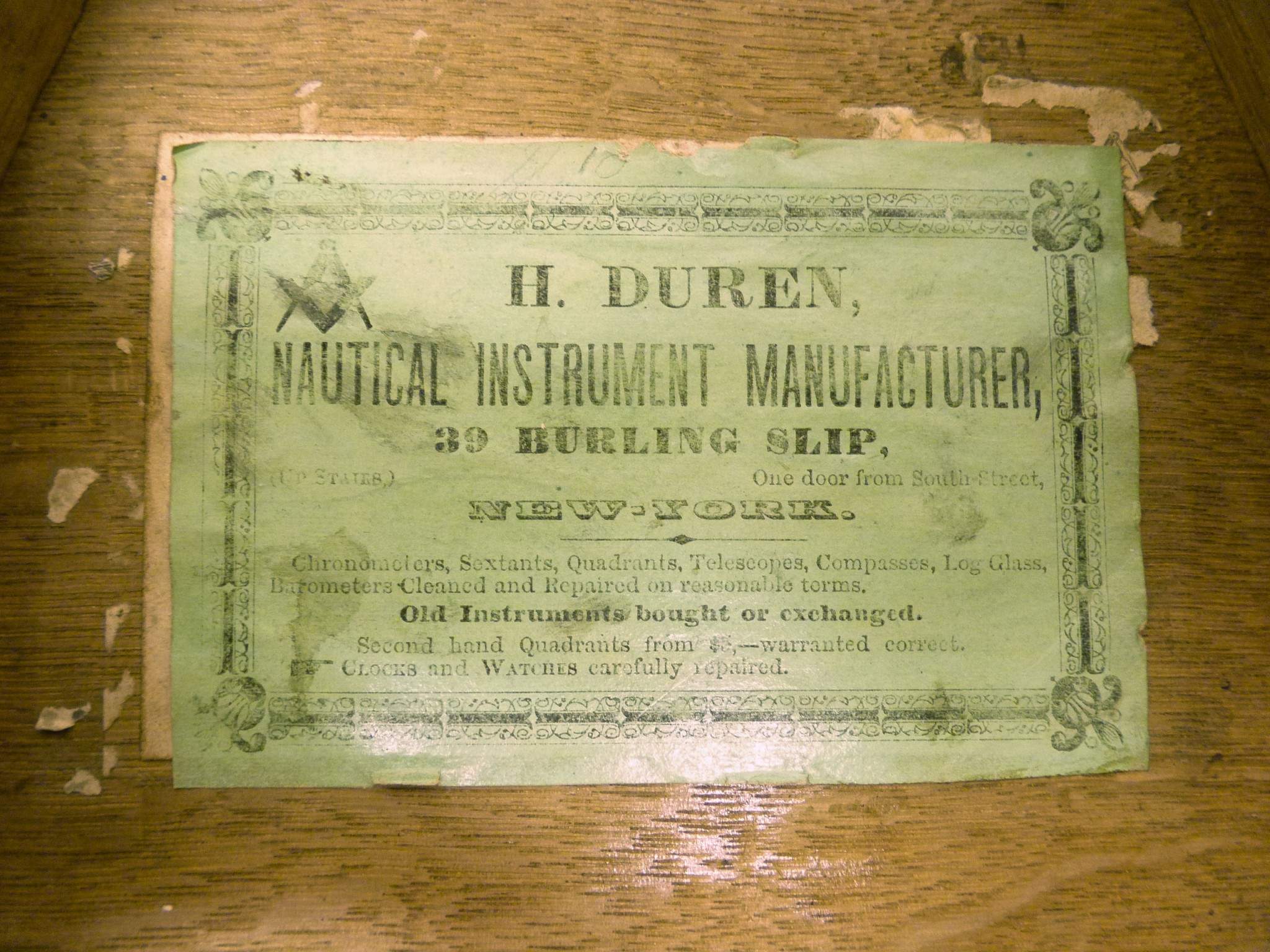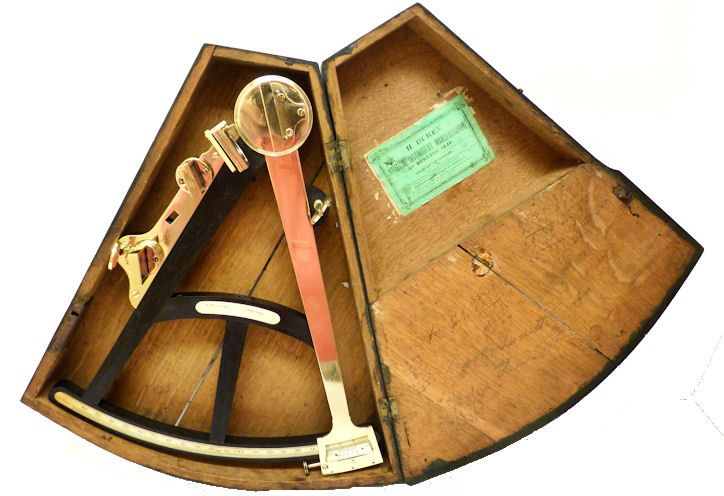BACK SIGHT PRESENTATION OCTANT
JESSIE RAMSDEN ANCHOR IMPRINT
Ca 1795

PRESENTED is a mariner’s octant made during the first half of the 18th Century. It
is fitted with two horizon mirrors and two peep sights, the lower set being for taking “back sights“.
It has the highly desirable imprint of a partial anchor with initials on either side on the arc between 45°; and 50° which
is known to be that of Jessie Ramsden, one of England’s foremost instrument makers. Jesse Ramsden invented the dividing
machine allowing for the precision marking of degrees on an instrument’s arc in 1775 and also made these arcs for others.
The accuracy and sharpness of the arc’s numerals suggest that this instrument was made by an advanced instrument
maker, one who would stand at the top of his trade. It has been polished and lacquered to be suitable for presentation as
an important gift.
The back shows the complex machined parts of the instrumentThis octant is marked J.B. Le Roy on the crossbar with
the name listed in Webster’s Database of Instrument makers with only one example dating to 1820.The instrument is 13 3/4 inches on the vertical which is still oversize for octants,
but smaller than the typical Hadley style octant of 17“. It was Hadley that invented the “double reflecting”
principal introducing it to the Royal Society in London in 1731.It is
in its natural state with a mellow patina of age that has developed over the last 216 years and is remarkably well
preserved considering age and use at sea. Please read the Condition Statement for details.

The original ivory cross member ivory is marked,
I.B. Le Roy, Guernsey=#000000>
JESSE RAMSDEN, ONE OF ENGLAND’S MOST IMPORTANT INSTRUMENT MAKER’S HISTORY: Jesse
Ramsden (1735-1800)
Ramsden was one of the most famous English scientific-instrument makers of the second half of the eighteenth century. In
1775, he invented a semi-automatic dividing machine, capable of marking graduated scales on sextants and other nautical and
astronomical instruments for his own instruments and provided the same to other mathematical instrument makers. He developed
improvements in the manufacture of sextants, theodolites, barometers, micrometers, and countless other devices. One of the
most important instruments built by him is the great astronomical circle of the Palermo Observatory. In 1786, elected fellow
of the Royal Society of London and, eight years later, member of the Imperial Academy of Saint Petersburg. In 1795, won the
Copley Medal, the highest scientific award of his time: the prize was established in 1736 by the Royal Society, thanks to
a bequest from Sir Godfrey Copley.
Arc – engraver’s mark between 50° & 45°
MARKINGS: You can clearly see the flukes of an anchor between 45 and 50 degree
position on the arc. With the aid of a loupe you can make out an initial on either side of the anchor. This mark is best
known as that of Jessie Ramsden. Ramsden is the English instrument maker who invented the dividing machine which
allowed for the precision indexing of degrees on an instrument’s arc.Inside
the case are eight notations in pencil which solve Local Apparent Noon sights for latitude. In addition is, “Bark
Sunette“, and the name of the master which is illegible. There also is an H. Duren, 39 Burling Slip,
New York, instrument maker’s label. Duren was active there in the 1850’s, but this octant, made in England, predates
that by a wide margin.
|
|









 OUR QUALIFICATIONS: We are one of the few company’s still selling navigation instruments that know anything
OUR QUALIFICATIONS: We are one of the few company’s still selling navigation instruments that know anything